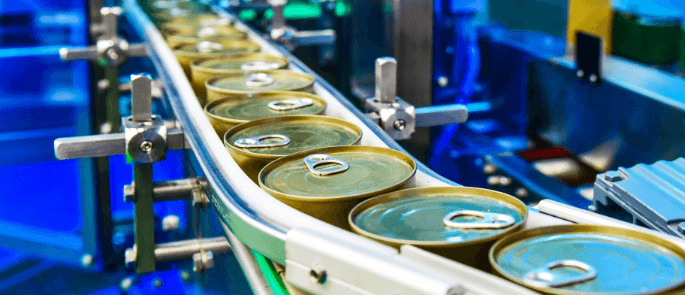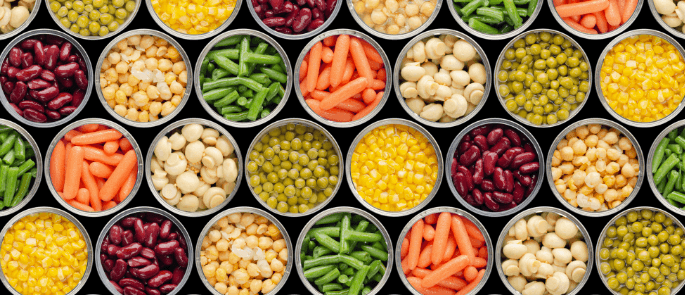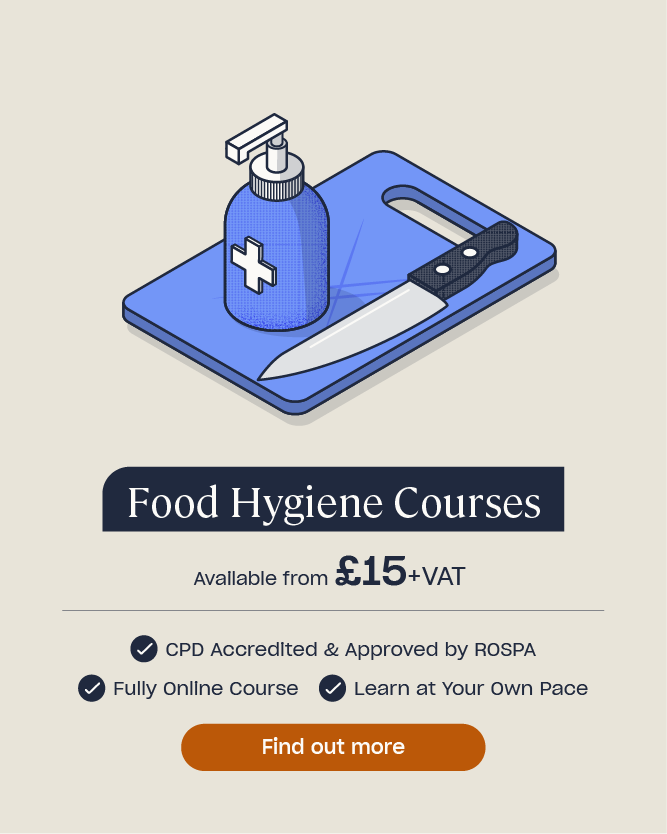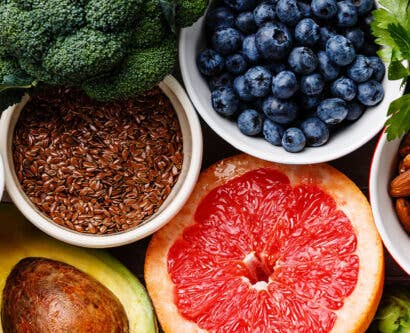What Are Ultra-Processed Foods and How Do We Recognise Them?
While food processing is often looked at negatively and has a bad reputation, it is also necessary in order to make most food edible for human consumption. According to the NOVA food classification, the food we buy falls into one of four categories. These are: unprocessed or minimally processed, processed culinary ingredients, processed, or ultra-processed.
There’s been a recent upward trend in people taking a closer look at what they’re putting into their body. Despite this, it can be difficult to identify how the food we buy has been processed.
Although the term ‘ultra-processed’ may not be universally known or recognised, according to statistics, more than half the calories an average person in the UK consumes come from ultra-processed foods.
In this article, we will be focusing on ultra-processed foods specifically, their popularity, and examples of them. We will also be outlining key ways in which you can recognise ultra-processed foods. We’ll also, with the help of a registered dietician, look into what these foods can do to your body and whether it’s possible to include ultra-processed foods into a balanced and healthy diet.
What is Ultra-Processed Food?
If a food is processed, it has been changed in one way or another from its original form by the time it is ready to be sold. Examples of this could be in the form of juicing, dicing, smoking, pasteurising, canning or drying, among other methods.
Ultra-processed foods, on the other hand, are processed foods that also have additives. They are, therefore, mostly made from substances extracted from other foods such as fats, starches, added sugars among others. They are sometimes referred to as ‘highly processed’.

It might be confusing as to why ultra-processed foods make up so much of an average person’s diet, but the key to their popularity lies in their convenience. Ultra-processed foods often take little to no preparation – ready-to-cook meals, for example. In the day and age where people have busy schedules and/or large families to feed, having food that is convenient can often trump the question of whether or not it is healthy.
According to NOVA, ultra-processed foods are often marketed intensively, easily brandable, and packaged attractively. They are also highly profitable due to the low cost of the ingredients. Therefore, it’s not surprising why stocking and marketing ultra-processed foods is popular and beneficial to manufacturers.
How Do We Recognise Ultra-Processed Foods?
As many foods are processed in some way, even if it is just minimally, it can be difficult to identify whether the food you are buying is ultra-processed or not.
For example, if made with wheat flour, water, salt, and yeast, bread is a processed food. However the same bread would become ultra-processed if emulsifiers were added.

There are, however, ways in which you can determine whether or not the food you are buying is ultra-processed. These include:
- Food that has a long list of ingredients listed on the back. According to Professor Maira Bes-Rastrollo, any food that lists more than five ingredients is likely to be ultra-processed.
- If there are unrecognisable ingredients listed on a food, there is a good chance that these could be preservatives, colourings, or even chemicals. If this is the case, the food would be ultra-processed.
- Foods that have high fat, sugar and salt content are likely to be ultra-processed.
- Fresh food that boasts a long shelf life may be ultra-processed, as it may contain preservatives. One of the exceptions to this is long-life milk, however, which doesn’t contain any preservatives and is classed as minimally processed due its pasteurisation at an ultra-high temperature (UHT).
- Foods that are aggressively marketed or branded. As we’ve already mentioned, ultra-processed foods are highly beneficial to manufacturers and so tend to be made to look more attractive to consumers. For more information on clean label packaging, take a look at our article.
The only sure-fire way to find out whether the food you’re buying is ultra-processed is by looking into its ingredients. Many of these will be things you wouldn’t add into your own cooking.

Some of the most commonly eaten ultra-processed foods in the UK are:
- Industrialised bread.
- Pre-packaged meals.
- Cereal.
- Reconstituted meat products such as sausages.
Other examples include:
- Soft drinks.
- Crisps.
- Chocolate.
- Ice-cream.
- Tinned soups.
- Chicken nuggets.
Ultra-Processed Foods and Health
There has been a growing trend in recent years with people taking more care in their diet, and looking into the ingredients of the food they’ve been consuming. For example, on the social media platform Instagram, the hashtag #healthy has 175 million posts, and #healthyfood has 91.6 million.
As ultra-processed foods are full of sugars, starches and additives, they aren’t exactly good for our health. In fact, studies have shown that ultra-processed foods are associated with higher risks of obesity, heart diseases and stroke, diabetes and cancer.
I recently spoke with Alex Cameron, a registered dietitian and nutritionist, about ultra-processed foods and how they affect our overall health. Here is what she had to say on the matter:
There is actually a link between consuming ultra-processed foods and depression. This is thought to be related to the effect that these foods can have on our gut microbiome and how they can displace nutrients that we need for the production of chemicals in our brains. Processed meats, alcohol, and sugar, can also increase the production of free-radicals in the body which can increase our likelihood of developing cancer. We need to consume a diet rich in antioxidants to reduce the amount of free-radicals and consequently reduce our risk of cancer.
Eating three meals a day doesn’t give us a lot of opportunity to fill our bodies with the foods required to meet the nutrient recommendations for optimal health. Therefore, if we are displacing too many of these meals with processed options, it’s going to become more difficult to meet our nutrient requirements. This can lead to some of these previously-mentioned health conditions, poorer immune systems, and just generally not feeling our best.
Alex Cameron

I also asked Alex’s opinion on whether or not she thinks it’s possible to include ultra-processed foods into a healthy diet. This is what she had to say:
“My suggestion is to think about how frequently ultra-processed foods are appearing in the diet, and if consuming them is causing any potential issues for you. This could be anything from sleep disruptions to gut issues or hormone imbalances. Also consider if these foods are making it more difficult for you to eat enough protein, vegetables, fruit, and dairy products due to you already feeling full. It’s also a good idea to think about whether you are consuming them because you actually enjoy them, or if it’s more because they are convenient or just part of your current eating habits.
There is definitely a place for ‘treat foods’ in the diet, even if these are ultra-processed, but just watch the frequency that you’re consuming these. When combined with a balanced diet that is rich in whole foods and nutritionally complete, ultra-processed foods may not have a huge impact on your overall health, but be mindful in your decision to consume them. If these ultra-processed foods are frequently replacing the more nutritious foods in the diet, this is when it can become an issue.
Alex Cameron
You can check out more about what Alex has to say on how to reach optimum health through your diet and food choices here on her website.
Want to learn more about Health & Nutrition?
Our Nutrition and Healthy Eating Training Course has been designed to provide learners with an introduction to nutrition and healthy eating in order to understand the link between our diet and health.
Processed vs Unprocessed Foods
As we explained earlier, processing is necessary in order to make most food edible for human consumption. There are, however, four different types of food processing and we will look at those in more detail now.
Unprocessed and minimally processed
These are foods that are either minimally processed, or not processed at all. They typically make up approximately 30% of the calories in an average UK diet.
Unprocessed foods are the edible parts of:
- Plants – such as the stems, roots, seeds or fruit.
- Animals – such as the muscle, offal, milk or eggs.
Minimally processed foods are natural foods that are slightly altered from their original state by removing the inedible or unwanted parts. However, they contain no added preservatives. They are processed through methods such as cooking, drying, crushing, boiling, pasteurising and vacuum-packaging, among others. This is designed to preserve them and make them edible.
Examples of minimally processed foods include:
- Frozen fruits and vegetables.
- Pasteurised milk.
- 100% fruit juice.
- Dried herbs.

Processed culinary ingredients
These are ingredients that aren’t meant to be eaten alone, but instead, are added to unprocessed or minimally processed foods. They are processed in order to create durable products that can be used to cook or season with by people cooking at home.
Examples include:
- Oils.
- Butter.
- Vinegar.
- Salt.
Processed foods
As we’ve already learned, if a food is processed, it has changed in one way or another from its natural form. These are foods that are made with a mixture of unprocessed or minimally processed and processed culinary ingredients. They are processed in order to prolong its shelf life, and/or enhance the taste. Processed foods usually have two or three ingredients. They can be recognised as modified versions of unprocessed or minimally processed foods.

Unlike processed culinary ingredients, processed foods are edible by themselves, and don’t have to be combined with any other food groups. However, they are often used in combination with other foods.
Examples of processed foods include:
- Freshly-baked bread.
- Cheese.
- Canned fish.
- Tinned vegetables.
- Cakes and biscuits.
Ultra-processed foods
Ultra-processed foods are processed foods that also have additives. They are mostly made from substances extracted from other foods such as fats, starches, and added sugars among others. These foods can be recognised by having at least five different ingredients – many of which include additives such as preservatives, colourings, chemicals or sweeteners.
Examples of ultra-processed foods include:
- Soft drinks.
- Crisps.
- Reconstituted meat products.
- Pre-prepared frozen meals.
We hope you’ve found this article on ultra-processed foods informative and helpful. If you have any questions, or need further information, please don’t hesitate to get in touch!
Further Resources
- Nutrition and Healthy Eating Training Course
- Level 3 Food Hygiene Training
- What is a Clean Label?
- What is Taste and Why is it Important in Food Products?
- Understanding Factors Affecting the Shelf Life of Food Products
- What is Healthwashing in the Food Manufacturing Industry?











